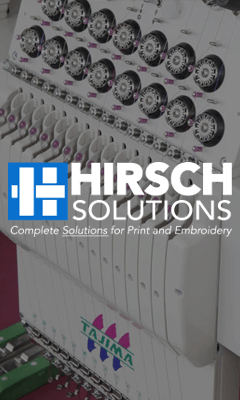Heat applied decorations. Indirect prints. Transfers. Call them what you will. Heat transfers are a popular method of apparel decoration that has become accessible to anyone looking to enter the industry. With low investment and a relatively small learning curve, heat pressing has gained popularity among both beginners and experienced decorators. However, there are several common mistakes that many people make when heat pressing. In this blog, we will discuss the most common mistakes made in heat pressing and how to avoid them.
Not All Heat Transfers Are Created Equal
One of the most important things to remember when heat pressing is that not all heat transfers are created equal. Different types of heat transfers require different time, temperature, and pressure settings for a successful application. It is crucial to use the correct recipe for the specific transfer type you are using. This means understanding the time, temperature, and pressure requirements for each transfer type and adjusting your heat press accordingly. Whether you are using a direct-to-film printer or screen printed transfers, it is essential to follow the recommended settings for each transfer type to ensure a good application.
Placement Matters
Another common mistake in heat pressing is improper placement of the design on the garment. Many decorators, especially those new to the industry, tend to place designs in the center of the garment. However, this may not always be the most flattering or visually appealing placement. It is important to consider the design and the garment style when determining the placement. Consider alternative placements such as left chest or upper shoulder areas for a more aesthetically pleasing look, particularly in when the garment wearing is going to appear on screen in a Zoom meeting or while live streaming. It is important to learn proper techniques for placement to ensure that the final product is something people will want to wear.
Consider Fabric Compatibility
Fabric compatibility is another important factor to consider when heat pressing. Not all heat transfers are suitable for all types of fabrics. Some transfers work well on 100% cotton, while others may be better suited for polyester or spandex blends. It is important to select the right heat transfer type for the fabric you are working with to ensure a successful application. Using the wrong transfer type on a fabric can result in poor adhesion or damage to the garment. It is essential to test the transfers on the fabric beforehand and follow the recommended application temperature for each transfer type.
Pressure Matters
Proper pressure is key to a successful heat press application. One common mistake is not ensuring that there are no obstructions on the platen area. The platen should provide a smooth, flat, and even printing surface. Obstructions such as hoodie seams or collars can affect the pressure and result in an uneven application. It is important to isolate the printing area and ensure that there are no obstructions that can interfere with the pressure. Using tools such as sublimation mouse pads or heat printing pillows can help raise or support the garment in areas with obstructions. Additionally,bconsider investing in interchangeable platens to accommodate different garment sizes and styles.
Check Colors on the Garment
Color accuracy is another important aspect of heat pressing. It is common for colors to differ between what is seen on a screen and the actual garment. It is crucial to check the color accuracy of the transfer against the actual fabric color. This can be done by comparing the transfer color against a Pantone book or using other color swatch references. By checking the colors on the garment itself, you can ensure that the final product matches the desired color and avoid any surprises or disappointments.
Cost Analysis and Pricing
One mistake many decorators make is not conducting a cost analysis and setting appropriate prices for their products. It is important to calculate the cost of the garment and the transfer and set a price that allows for a reasonable profit margin. Doubling the cost of the materials is a common method for setting prices, but it is also important to consider overhead expenses and the value of your time. Conducting time studies and paying yourself a fair wage for your work is crucial for long-term profitability and success.
Utilize On-Demand Printing
Heat pressing offers the advantage of on-demand printing, allowing for small runs and customization without the need for bulk orders. This flexibility is especially beneficial for online stores, schools, and organizations that need personalized or custom prints. By stocking garments and transfers, decorators can fulfill orders as they come in, reducing the need for large inventory and minimizing waste. On-demand printing allows decorators to provide a wide range of options and cater to individual customer needs while maintaining profitability.
Conclusion
Avoiding these common mistakes in heat pressing can greatly improve the quality and efficiency of your work. By understanding the importance of using the correct transfer type, proper placement, fabric compatibility, pressure, color accuracy, and pricing strategies, you can achieve consistent, high-quality results. Heat pressing is a versatile and accessible method of apparel decoration, and by implementing these tips, you can enhance your skills and provide customers with exceptional products.
Made with assistance from VideoToBlog


Comments